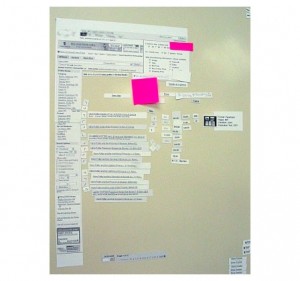What is participatory design?
Participatory design enables designers and developers to learn user needs and preferences early in the design process through a facilitated group workshop. The results are early design ideas that reflect user requirements.
In participatory design, a team of people who represent the stakeholders in an application design effort—users, designers, marketers, executives, and developers—work together to come up with conceptual designs that reflect the business goals and user requirements. Group members use common materials such as colored index cards, sticky notes, felt pens, flip charts, scissors, and tape. These simple tools help bridge the gulf between developers and users, reduce issues of “ownership” and leadership, demystify technology and methodology, and encourage communication and creativity. No participant feels intimidated by unfamiliar technology or software.
The facilitator refers to a list of topics, issues, and questions in guiding the session. The facilitator stimulates discussion and supports a dialogue among all the participants, ensuring that both planned and impromptu topics are covered.
During design sessions, participants may break into smaller groups to brainstorm ideas that are then presented to the larger group for discussion, evaluation, and possible refinement. The facilitator moderates the design presentations, asks follow-up questions, summarizes key features of each design, and notes reactions to the designs.
At the close of a participatory design session, the team has produced one or more paper prototypes of a user interface, consisting of sketches or block diagrams of screens or web pages and textual descriptions of interface behavior. These materials may also reflect new thoughts about application requirements.
A clear record of the design process is just as important as the paper prototype produced by the team. The session may be recorded as a video showing discussion, activities, and final results. A video camera positioned directly over the community work surface can record all the elements tried—and rejected or retained—as the paper prototype gradually takes shape. Still photography can be used to capture key stages in design.


